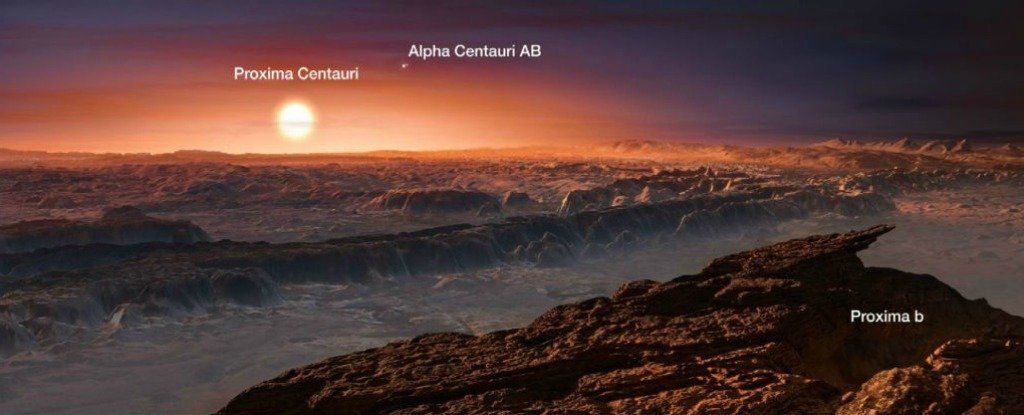
Astronomers Confirm The Earth-Sized Planet at Proxima Centauri Is Definitely There
by VICTOR TANGERMANN, FUTURISMUsing state-of-the-art astronomical instruments, an international team of researchers has confirmed the existence of Proxima b, an Earth-like planet that's orbiting the closest star to our Solar System, Proxima Centauri.
"Confirming the existence of Proxima b was an important task, and it's one of the most interesting planets known in the solar neighborhood," Alejandro Suarez Mascareño, lead author of a paper about the research accepted for publication in the journal Astronomy & Astrophysics, said in a statement.
They found that Proxima b is 1.17 times the mass of Earth, smaller than the older estimate of 1.3 times. It orbits its star in just 11.2 days.
Nailing down the mass of a distant planet with such precision is "completely unheard of," said 2019 Nobel Prizer winner Michel Mayor, who laid the groundwork for the technology that made the discovery possible, in the statement.
Proxima b was first discovered in 2016 using HARPS (High Accuracy Radial Velocity Planet Searcher), a planet-hunting spectrograph mounted to one of the telescopes at the European Southern Observatory at the La Silla Observatory in Chile.
The scientists were able to hone in on the planet with ESPRESSO, a new generation spectrograph also at the observatory in Chile, which boasts three times the precision as HARPS.
"We were already very happy with the performance of HARPS, which has been responsible for discovering hundreds of exoplanets over the last 17 years," Francesco Pepe, astronomy professor at the University of Geneva, Switzerland, and leader of ESPRESSO.
"We're really pleased that ESPRESSO can produce even better measurements, and it's gratifying and just reward for the teamwork lasting nearly 10 years," Pepe, who also co-authored the paper, added.
Even though Proxima b orbits its star at such a close distance, it still receives about the same amount of energy from it that Earth does from the Sun. And that has astronomers excited about the potential of finding alien life.
But there's some bad news: Proxima Centauri tends to bombard any planets in its vicinity with a ferocious amount of X-rays - Proxima b receives about 400 times the amount as Earth receives from its Sun.
That leads to the question: "Is there an atmosphere that protects the planet from these deadly rays?" asked co-author Christophe Lovis, a researcher who worked on ESPRESSO, in the statement.
Lovis hopes that the next generation of spectrographs - ESPRESSO's successor, "RISTRETTO," is already in the works - could help us find the answer.
For us to get a closer look at Proxima b however, Proxima Centauri is "only" 4.2 light-years from the Sun - meaning it would still take several thousand years to get there using today's propulsion technology.
This article was originally published by Futurism. Read the original article.